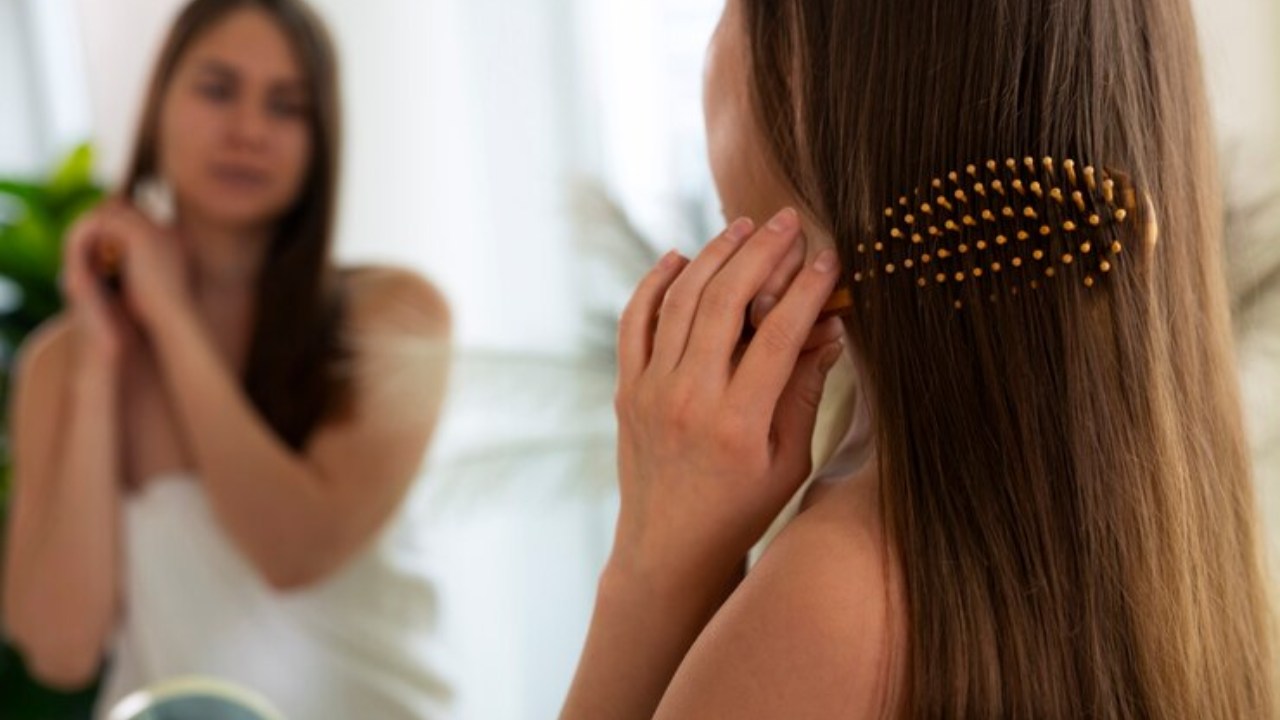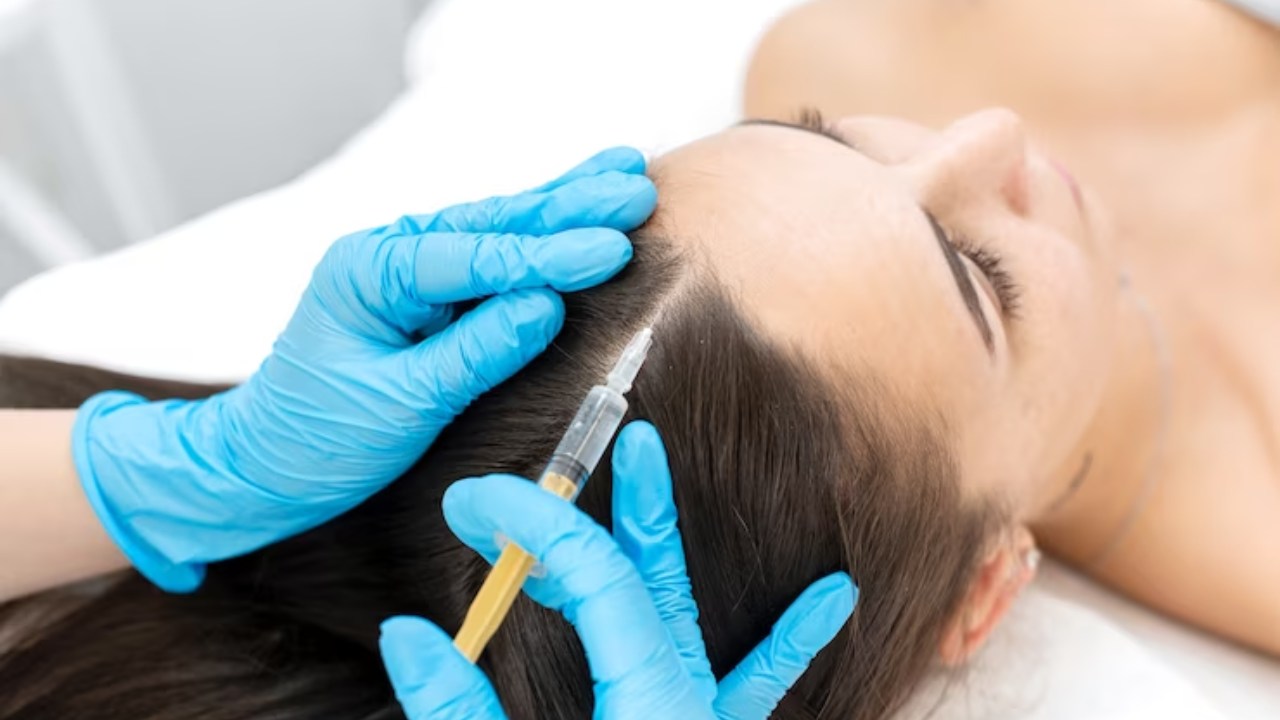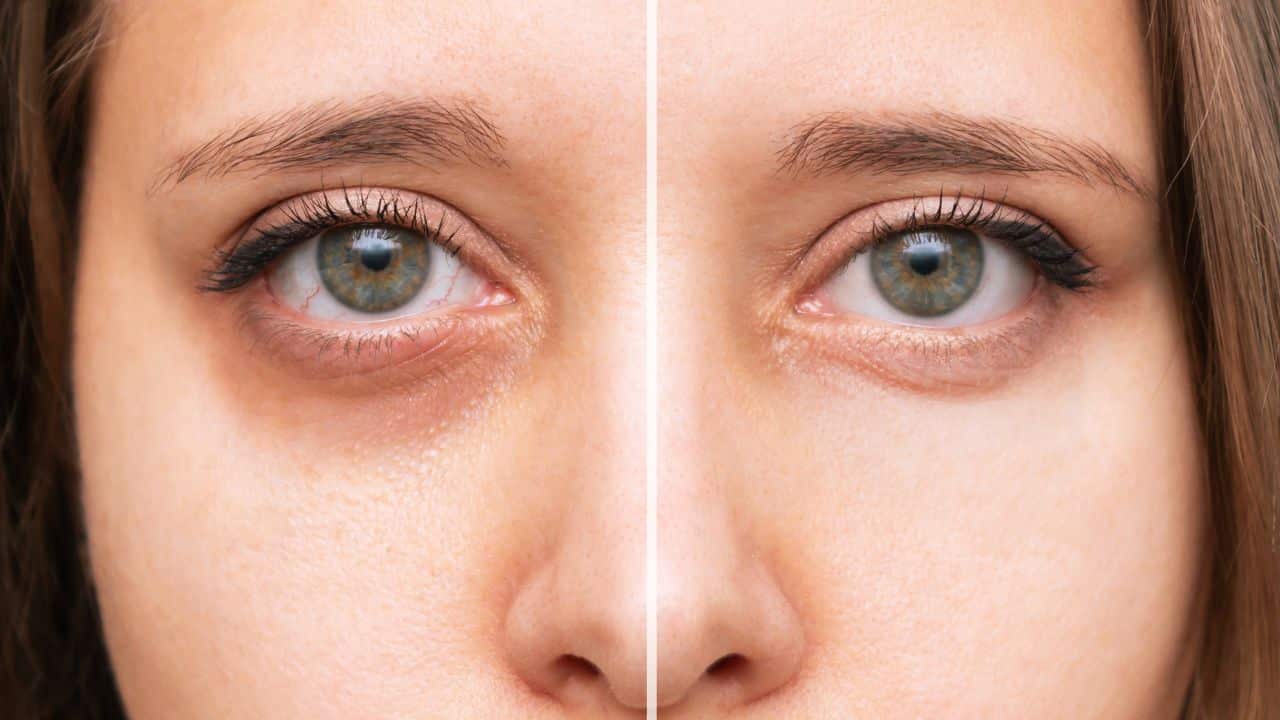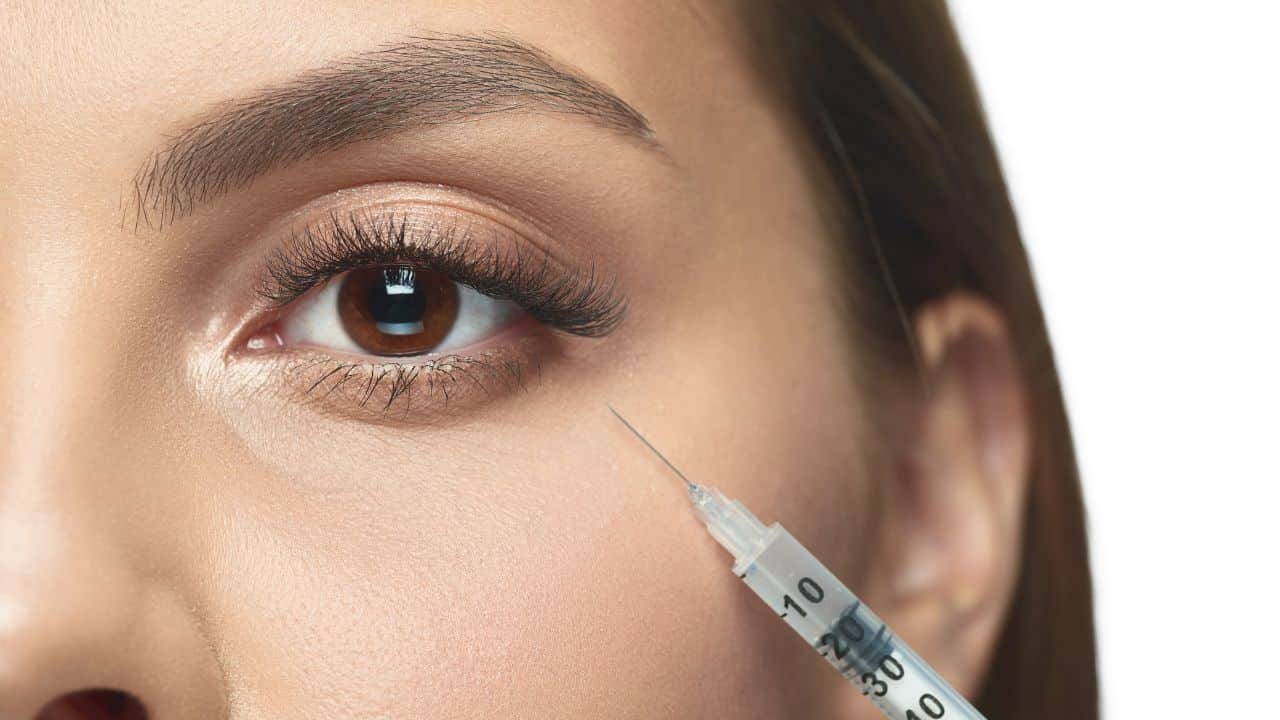Tackling hair loss can be a daunting journey, with many questions and uncertainties along the way.
Platelet-Rich Plasma (PRP) therapy is one potential solution gaining attention for its effectiveness. This innovative therapy is part of the vast landscape of hair restoration treatments, showing promising results.
But can hair loss be reversed with PRP therapy? In this blog, we dive deep into the science, expectations, and holistic approaches that complement PRP therapy, offering a beacon of hope for those seeking to reclaim their hair and confidence.
From understanding the root causes of hair loss to exploring the synergistic role of diet and lifestyle and addressing all your burning questions, this blog aims to provide a thorough insight into the potential of PRP therapy to reverse hair loss.
Join us as we unlock the possibilities on this transformative journey toward hair restoration, guided by expert insights and real-life success stories.
Understanding Hair Loss
Hair loss is a condition that affects millions of people worldwide, causing not just a change in appearance but also impacting self-esteem and emotional well-being.
Understanding the root causes of hair loss is the first step toward finding an effective treatment and potentially reversing its effects. Here, we will look into the multifaceted reasons behind hair loss, shedding light on the biological, hormonal, environmental, and lifestyle factors at play.
Genetic Factors
One of the most common causes of hair loss is genetics. Androgenetic alopecia, also known as male or female pattern baldness, is a hereditary condition that affects both men and women. It is characterized by patterned hair thinning, primarily determined by genetics.
The sensitivity of hair follicles to dihydrotestosterone (DHT), a derivative of the male hormone testosterone, leads to follicular miniaturization and, eventually, hair loss.
Hormonal Changes
Hormones play a significant role in regulating hair growth and health. Fluctuations in hormone levels, such as those experienced during pregnancy, menopause, or as a result of thyroid disorders, can lead to temporary or permanent hair loss.
For women, polycystic ovary syndrome (PCOS) can also cause hormonal imbalances that may lead to hair thinning or loss on the scalp while increasing hair growth in the body.
Stress
The impact of stress on the body’s physiological functions cannot be overstated, and its effect on hair health is no exception. Telogen effluvium is a temporary condition often triggered by severe stress, shock, or trauma, causing hair roots to prematurely enter the resting phase of the hair cycle, leading to significant hair shedding.
Managing stress through mindfulness, exercise, and other stress-reduction techniques can help mitigate this form of hair loss.
Environmental Impacts
Environmental factors, including pollution, exposure to toxic substances, and even the water we use to wash our hair, can contribute to hair loss.
The scalp and hair can absorb harmful pollutants from the air, disrupting the hair growth cycle and leading to hair thinning and loss. Additionally, overexposure to sunlight and ultraviolet (UV) rays can weaken the hair, making it more prone to breaking.
Can Hair Loss Be Reversed?
The reversibility of hair loss largely depends on its cause. Genetic hair loss, for example, can be challenging to reverse but may be managed with treatments like PRP therapy, medications, or hair transplant surgery.
Hair loss due to hormonal changes, stress, or environmental factors may be reversible by addressing the underlying cause. Improving diet, reducing stress, and protecting the hair from environmental damage can help restore hair growth and health.
The Importance of a Holistic Approach
Addressing hair loss effectively requires a holistic approach, considering biological and lifestyle factors. A balanced diet rich in vitamins and minerals supports hair health from the inside out, while stress management and avoiding harmful environmental exposures can protect hair from external damage.
Treatments like PRP therapy can be more effective when combined with lifestyle changes, offering a comprehensive solution to those battling hair loss.
The Science Behind PRP Therapy
Platelet-Rich Plasma (PRP) therapy is a groundbreaking treatment in regenerative medicine, gaining widespread acclaim for its potential in addressing various medical conditions, including hair loss. This innovative treatment leverages the body’s natural healing processes to stimulate hair growth and follicle regeneration.
What is PRP Therapy?
PRP therapy involves the use of a patient’s platelets to enhance the body’s healing capabilities, particularly in areas affected by hair thinning or loss.
Platelets, a blood component, are crucial for clotting and play a pivotal role in wound healing and tissue regeneration. They are rich in growth factors—proteins essential for healing injuries and regenerating tissues.
The PRP Process
The PRP therapy process is relatively straightforward and can be broken down into three main steps:
- Blood Collection: Initially, a small amount of blood is drawn from the patient, similar to a routine blood test.
- Centrifugation: The collected blood is placed in a centrifuge, spinning at high speeds. This process separates the blood into layers, isolating the platelet-rich plasma from other components.
- Injection: The concentrated PRP is injected directly into the scalp at hair thinning or loss areas. This step is meticulously performed, targeting specific zones to maximize hair growth potential.
PRP Therapy at the Cellular Level
The efficacy of PRP therapy lies in the high concentration of growth factors found in the platelets. When injected into the scalp, these growth factors work to stimulate several critical processes at the cellular level:
- Stimulating Angiogenesis: PRP promotes the formation of new blood vessels (angiogenesis), improving blood flow to the scalp. This increased blood supply delivers more oxygen and nutrients to hair follicles, revitalizing them and promoting healthier hair growth.
- Activating Stem Cells: The growth factors in PRP activate stem cells in the hair follicle environment. This activation is crucial for initiating the growth phase of hair follicles, encouraging new hair development.
- Increasing Follicle Size: PRP has been shown to improve the size of hair follicles, leading to thicker hair strands. This effect contributes to overall hair density and volume.
- Extending the Anagen Phase: The anagen phase is the active growth phase of hair follicles. PRP therapy can extend this phase, resulting in longer growth periods for hair and reducing the likelihood of premature hair loss.
The Role of Diet and Lifestyle in Hair Health
The journey towards achieving and maintaining healthy hair depends not solely on treatments like PRP therapy; it’s also significantly influenced by our diet and lifestyle choices. The adage “you are what you eat” particularly applies to hair health.
A nutritious diet rich in essential vitamins and minerals, coupled with a healthy lifestyle, can create the optimal environment for hair growth and complement the effects of PRP therapy. Let’s explore the vital components of diet and lifestyle that are pivotal in nurturing hair health.
Nutritious Diet for Healthy Hair
- Protein: Hair is primarily made of keratin, a type of protein. Thus, including adequate protein in your diet is crucial for hair growth and strength. Sources like fish, chicken, eggs, and legumes can provide the necessary protein to support hair structure.
- Iron: Iron deficiency is a common cause of hair loss, particularly in women. Iron helps in carrying oxygen to your hair follicles, promoting growth. Incorporate iron-rich foods such as spinach, lentils, and red meat into your diet to prevent anemia and support hair health.
Vitamins and Minerals:
- Vitamin A: Essential for cell growth, including hair, the fastest-growing tissue in the human body. Vitamin A also helps produce sebum, moisturizing the scalp and keeping hair healthy. Carrots, sweet potatoes, and kale are excellent sources.
- B Vitamins, especially Biotin: Known for its role in hair growth, biotin deficiencies are linked to hair loss. Whole grains, almonds, meat, fish, and dark, leafy greens are rich in B vitamins.
- Vitamin C: A powerful antioxidant that helps protect against oxidative stress caused by free radicals. Additionally, vitamin C is necessary for collagen production and iron absorption. Citrus fruits, strawberries, and bell peppers are good sources.
- Vitamin E: Like vitamin C, vitamin E is an antioxidant that can prevent oxidative stress. Nuts and seeds are rich in vitamin E.
- Zinc: Plays a role in hair tissue growth and repair. It also helps keep the oil glands around the follicles working properly. Foods high in zinc include beef, spinach, and pumpkin seeds.
Lifestyle Adjustments for Hair Growth
- Stress Reduction: High-stress levels can lead to several conditions, including telogen effluvium, which causes hair to fall out prematurely. Practices such as yoga, meditation, and regular exercise can reduce stress and support hair growth.
- Scalp Care: Regularly massaging the scalp can stimulate blood circulation, enhancing the delivery of nutrients to hair follicles. Keeping the scalp clean and avoiding harsh chemical treatments can prevent damage and support hair health.
- Adequate Sleep: Sleep is crucial for overall health and well-being, including hair health. Growth hormones released during sleep aid in cell regeneration and hair growth.
- Hydration: Staying hydrated is essential for maintaining healthy hair. Water helps transport nutrients to the hair follicles, promoting growth and vitality.
Complementing PRP Therapy with Diet and Lifestyle
Integrating a nutritious diet and healthy lifestyle with PRP therapy can synergize to produce optimal results.
While PRP therapy stimulates hair follicles at a cellular level, a supportive diet and lifestyle ensure that your body has all the necessary building blocks and environment for robust hair growth.
This holistic approach enhances the effectiveness of PRP therapy. It contributes to overall health, making it a win-win for individuals seeking to combat hair loss and achieve a fuller, healthier head of hair.
Combining PRP Therapy with Holistic Measures
Platelet-Rich Plasma (PRP) therapy is at the forefront of hair restoration treatments, offering a promising avenue for those grappling with hair loss. However, the efficacy of PRP therapy isn’t solely confined to the treatment room; it can be significantly enhanced when combined with a holistic approach to health and wellness.
By integrating targeted dietary and lifestyle changes, individuals can create an optimal environment for hair regrowth, potentially reversing hair loss. Let’s explore how to harmonize PRP therapy with holistic measures and provide practical tips for embedding these changes into daily life.
Synergizing PRP Therapy with Nutrition
Nutrition plays a critical role in supporting the hair growth cycle and can amplify the results of PRP therapy. A diet rich in proteins, vitamins, and minerals provides the essential nutrients for robust hair growth.
Incorporating foods high in omega-3 fatty acids, such as salmon and flaxseeds, can improve scalp health. Antioxidant-rich fruits and vegetables, like berries and leafy greens, combat oxidative stress, a known contributor to hair loss.
Additionally, ensuring adequate iron and zinc intake can prevent deficiencies that often lead to hair thinning.
Tip: Start your day with a smoothie packed with spinach, berries, and a scoop of protein powder to kickstart your intake of hair-boosting nutrients.
Lifestyle Modifications to Complement PRP Therapy

- Stress Management: Chronic stress disrupts the hair growth cycle, leading to shedding and thinning. Techniques such as meditation, yoga, and regular exercise reduce stress levels and improve overall well-being, creating a favorable environment for hair growth post-PRP therapy.
- Scalp Care: Gentle scalp massages can enhance blood circulation, improving the delivery of nutrients to the hair follicles. Opt for natural hair care products free from harsh chemicals to maintain scalp health.
- Adequate Sleep: Quality sleep is crucial for the body’s repair processes, including hair growth. Establishing a regular sleep schedule supports the body’s natural rhythms, promoting healthier hair.
- Hydration: Proper hydration is essential for maintaining the health of hair follicles. Aim to drink at least eight glasses of water daily to support your body’s hydration needs.
Tip: Implement a bedtime routine that includes winding down without electronic devices, ensuring your bedroom is conducive to sleep, and incorporating a short meditation or reading session to improve sleep quality.
Environmental Considerations
The environment, including exposure to pollutants and UV rays, can impact hair health. Wearing a hat or using a scalp sunscreen can protect the hair and scalp from sun damage.
Reducing exposure to pollutants and toxins in the air and personal care products can also support hair health.
Tip: Invest in an air purifier for your home to reduce exposure to airborne pollutants, and consider using natural, organic hair care products to minimize chemical exposure.
Harmonizing PRP Therapy with Holistic Health
The journey to reversing hair loss with PRP therapy is most effective when accompanied by a commitment to holistic health. This integrated approach enhances the outcomes of PRP treatments and promotes a healthier lifestyle that benefits the entire body.
Individuals can significantly boost the effectiveness of PRP therapy by making targeted nutritional choices, adopting stress-reducing practices, caring for the scalp, ensuring adequate sleep, staying hydrated, and protecting the hair from environmental damage.
These lifestyle adjustments are steps towards healthier hair and investments in overall health and well-being.
Addressing Expectations
Embarking on Platelet-Rich Plasma (PRP) therapy for hair loss is a journey filled with anticipation and questions. Understanding what to expect and having your queries addressed can significantly ease your mind.
Here, we set realistic expectations for PRP therapy outcomes and tackle some frequently asked questions about the treatment process.
Setting Realistic Expectations for PRP Therapy Outcomes
- Timeline for Seeing Results: PRP therapy stimulates hair growth by activating the hair follicles, a process that doesn’t happen overnight. Most patients notice hair thickness and coverage improvements within 3 to 6 months after starting treatment. However, the exact timeline can vary based on the individual’s health, the severity of hair loss, and adherence to treatment sessions.
- Variability of Patient Responses: It’s crucial to understand that results can vary from one person to another. Factors such as age, hormonal balance, nutritional status, and the pattern of hair loss all affect how effectively PRP therapy works. While many patients experience significant hair regrowth, others may see more modest improvements. A consultation with a specialist can help set personalized expectations based on your specific condition.
Frequently Asked Questions
How Long Does Each PRP Session Take?
A typical PRP therapy session lasts about 30 to 60 minutes, depending on the treatment area’s size and the specific techniques used by your provider.
Is PRP Therapy Painful?
Patients often report feeling a mild level of discomfort or pressure during the injections, but the pain is generally manageable. Most clinics apply a topical anesthetic to minimize discomfort during the procedure. The level of pain experienced can vary, but it’s usually described as a series of quick, minor stings.
How Many Sessions Will I Need?
The number of PRP sessions required can vary based on individual goals and the initial severity of hair loss. Typically, 3 to 4 treatments about 4 to 6 weeks apart are recommended to maximize the therapy’s effectiveness. After the initial series, maintenance sessions every 6 to 12 months can help sustain the results.
What Should I Expect After a PRP Treatment?
Post-treatment, it’s normal to experience some tenderness, swelling, or mild bruising at the injection sites, which usually subsides within a few days. Most patients can resume their normal activities almost immediately, with few restrictions on post-treatment care.
Are There Any Side Effects?
PRP therapy is generally well-tolerated, with a low risk of side effects since it uses the patient’s blood. However, as with any injection procedure, there is a minimal risk of infection, injury to blood vessels or nerves, and pain at the injection site.
Will I Need to Follow Any Special Aftercare Instructions?
Specific aftercare instructions may vary, but patients are generally advised to avoid washing the treated area for at least 48 hours and steer clear of harsh chemical hair treatments for a week or so. Your provider may also recommend gentle, natural products to support scalp health during recovery.





